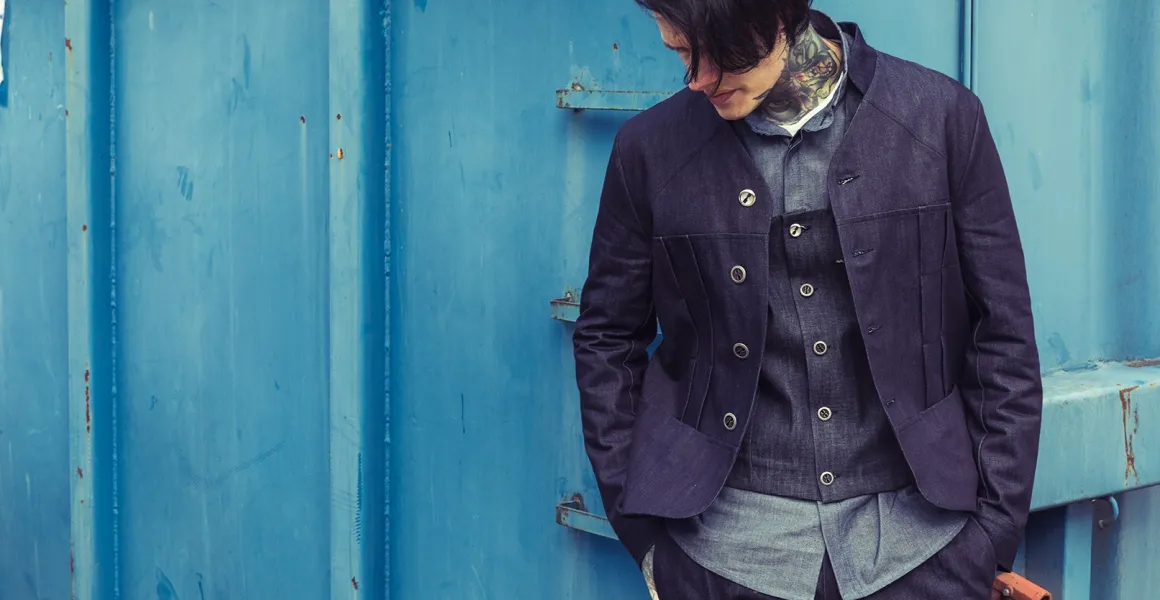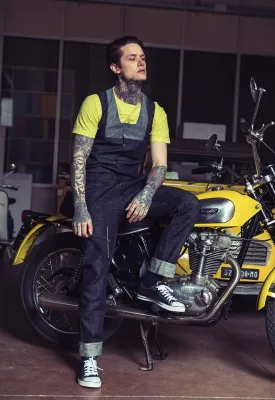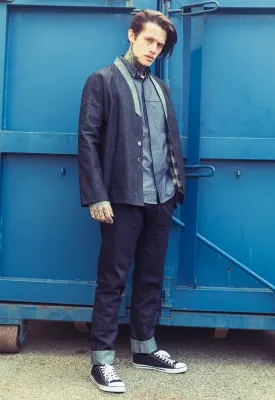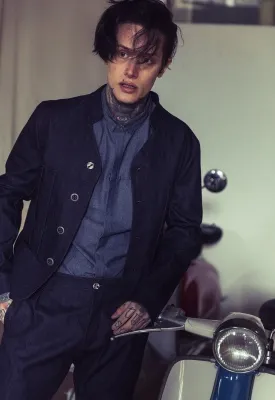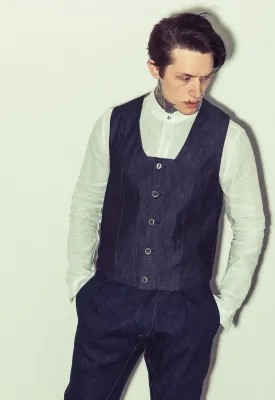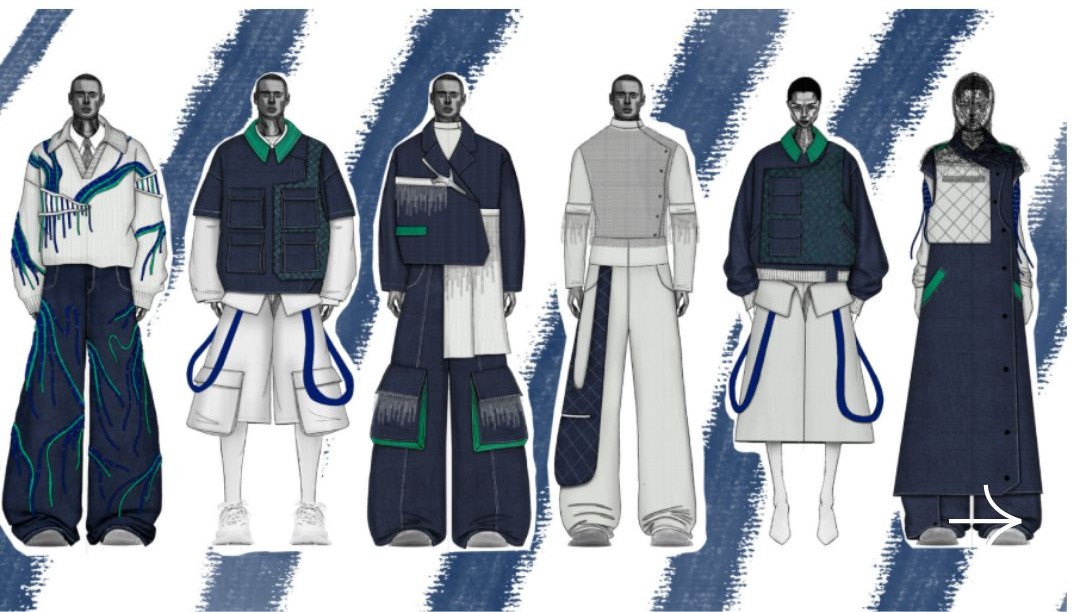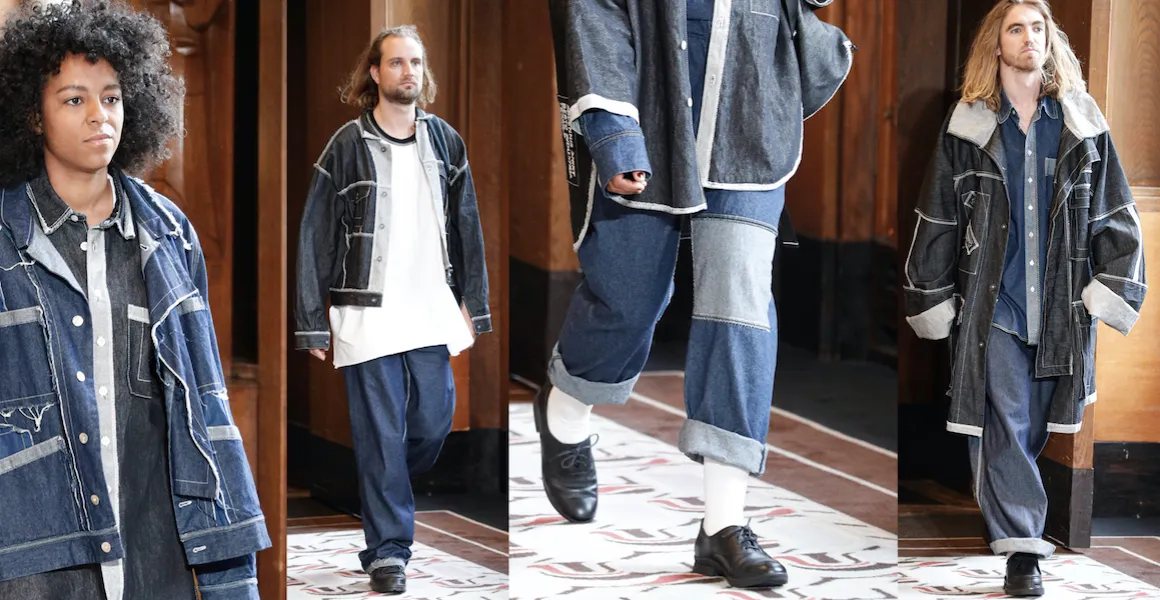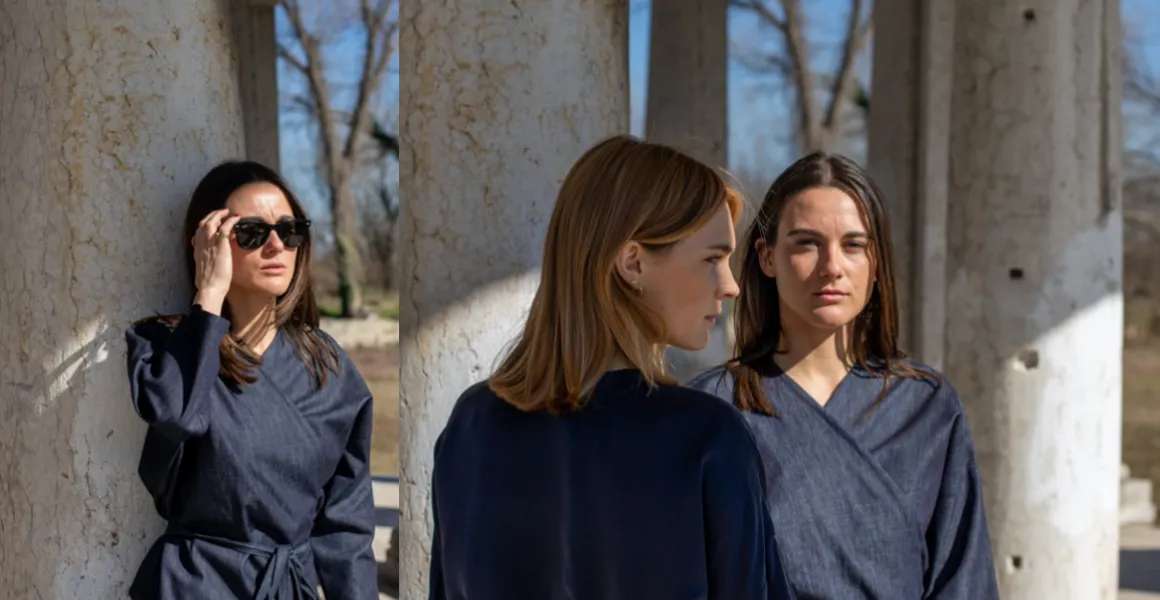What was your first project?
Hellequino is my first “solo” project. It stems from the desire to make my statement in the Raw and Workwear world, trying to blend elements of classic Italian tailoring with the pure functionality that these garments typically represent. Along with construction techniques, another exciting aspect to reinterpret in this mood is the introduction of a minimal style line that still manages to recall the Heritage archetypes of this niche, translated into a unique and distinguishable visual trait.
The creative process: do you work instinctively or plan every single step? Where do your ideas come from?
Inspiration is always around me. A photo, a song, a used garment found at the flea market. There are no limits to getting involved and reinventing yourself in this profession.
What did you think when Berto contacted you?
The understanding with Berto was immediate, at all levels. The company combines simply unmatched experience in this sector with a level of friendliness and attention to customer needs that is almost impossible to find in other textile companies today.
Which Berto fabrics have you worked with for your project and collections?
Everything started with the Manifattura 1887 proposals, a selvedge denim with an authentic feel. I then refined the research based on a specific weight I needed to give the garments a unique volume and an innovative wearing sensation. The 11oz Catch fabric was my final choice. Subsequently, I found in the non-selvedge Ranger fabric the ideal raw material to give structure to lined garments like the Kimono and the Gilet.
What do you consider the most significant aspect of Berto for Talents? What goals have you been able to achieve through this program?
Berto’s attention to young and innovative projects is simply a noble gesture. Making their experience available and supporting start-ups in this sector by breaking down minimum production barriers is a great effort that enables the creation of research-driven and highly inspiring collections, which would otherwise be constrained by the many restrictions that industrial reality imposes.
“Less but better” can be interpreted as an endorsement of a certain degree of purity in design and fashion design. It can also be understood as an environmental message about reduction and sustainability. What are your thoughts on this?
The quest to reduce contemporary society’s environmental impact is an aspect that no industrial entity can afford to neglect today. With due time, and we are severely behind, appropriate legislative limitations will come, and those who have already educated themselves and structured their operations from this perspective will be rightfully rewarded. “Don’t buy trash” is our payoff, and I don’t think it needs any explanation. Once again, in this respect, I found in Berto a partner on our same wavelength.
Is there something you’ve never done that you’d like to accomplish?
The best is yet to come… Every day we stay focused on the present and step by step we build the foundation of our project. Stay tuned.
